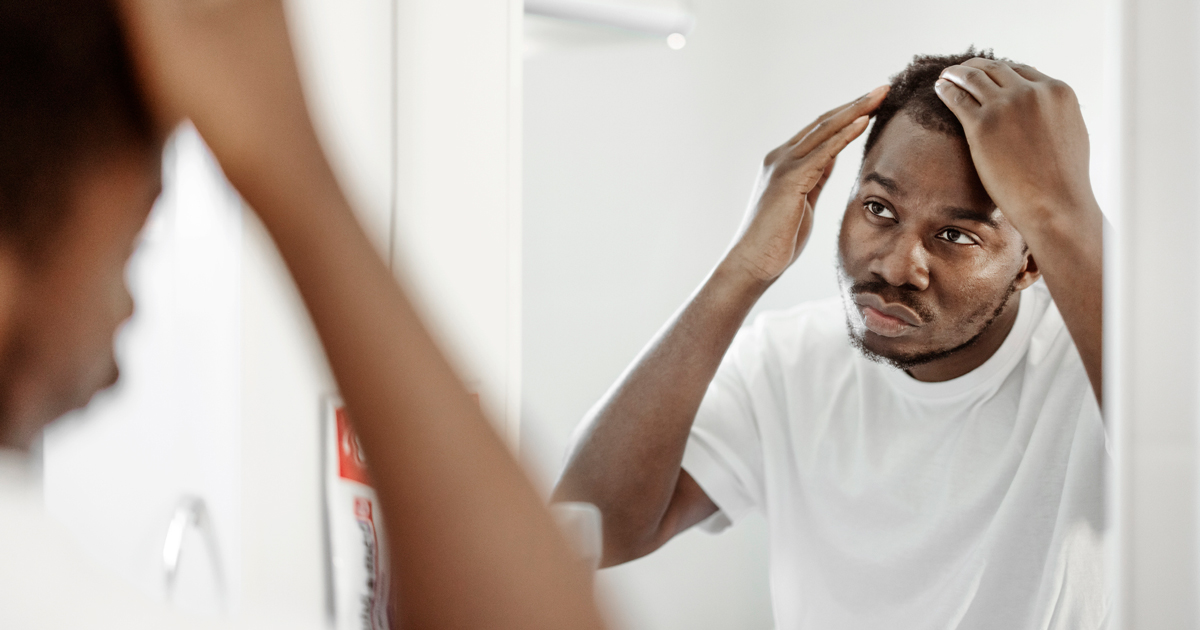Why am I losing my hair and can I stop it?

Male baldness is one of those facts of life that men dread. It often starts as a receding hairline or bald spot on top of the head that gradually grows larger over the years.
"Male pattern baldness, also called androgenetic alopecia, is the most common type of hair loss in men," says Nebraska Medicine dermatologist Ronald Sulewski, MD. "It is caused by a combination of three factors that include genetics, age and hormones."
What causes hair loss
As men age, they experience changes in their androgen hormone levels. Androgens regulate hair growth. Over time, these hormones cause the hair follicles to shrink, resulting in shorter and finer strands of hair. Eventually, new hair no longer grows in its place. Men who have fathers or close relatives with male pattern baldness are at highest risk for developing baldness.
Strangely, while men may experience hair loss on their head, at the same time, they may also develop more hair in other areas like their ears, face, chest or back. This is because the receptors that bind to androgens are different in different areas of your body.
In some cases, male baldness can be caused by health conditions such as certain cancers, medications, thyroid conditions and anabolic steroids. These conditions may also cause other symptoms such as a rash, redness, pain, peeling of the scalp, hair breakage, patch hair loss or an unusual pattern of hair loss. Talk to your doctor if you experience any of these additional symptoms.
Treatments for hair loss
The good news is that there are treatments that can help prevent hair loss and even stimulate new hair growth. Two preventive medications include finasteride and minoxidil. Finasteride is an oral prescription that can stop hair loss in some men. It works by blocking the enzymes that convert testosterone to dihydrotestosterone (DHT), the hormone considered the primary culprit for hair loss. Once you stop taking finasteride, your hair loss will return.
Minoxidil is a topical treatment applied to the scalp that reactivates dormant hair follicles to start growing hair again. Hair loss will likely return once you stop using the treatment.
"Most men will have success with a combination of the two treatments," says Dr. Sulewski.
Another newer treatment includes platelet-rich plasma (PRP). PRP involves drawing blood from the male and injecting the processed product back into the scalp to stimulate growth. The treatment is typically performed four times, once a month, followed by maintenance treatments. The treatment can help with maintenance of current hair and may help stimulate new growth for some men.
"If you are experiencing early male baldness, you should consider being evaluated by your doctor to determine the cause and rule out other possible health problems," says Dr. Sulewski.
Lastly, hair loss and baldness are not unique to men. In fact, approximately 80% of women will experience hair loss by age 80. "I see more women in my office than I do men," says Dr. Sulewski. "That may be in part due to the fact that hair loss is less acceptable to most women. Fortunately, we have treatments for women as well that are similar to the treatments we use for men."
Call 800.922.0000 or schedule online for an appointment with one of our specialists.







